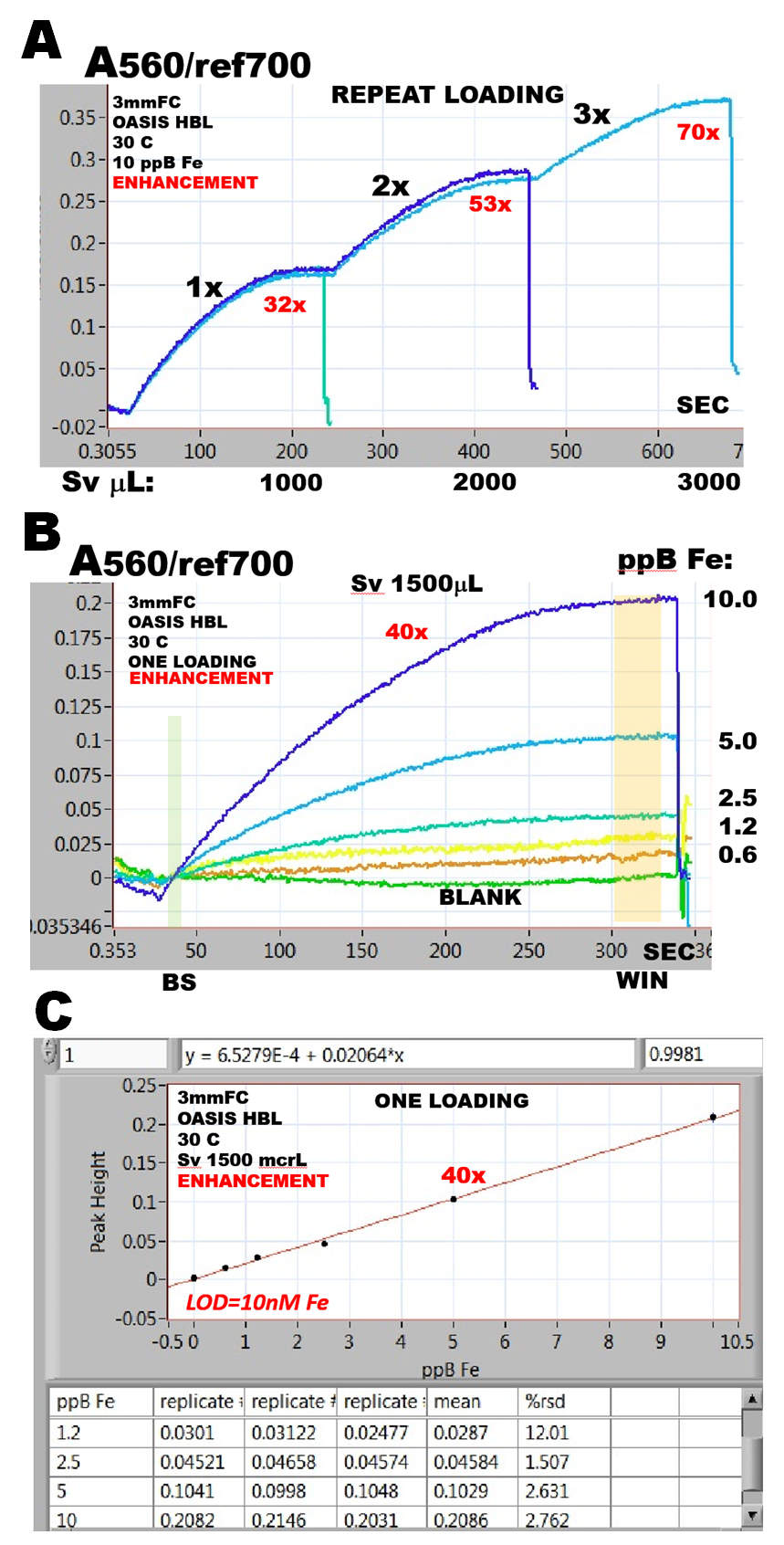Sensitivity, Reproducibility and Applications of BIS
3.4.3.C.
Accumulation of target analyte from a large sample volume is an valuable feature of SE and BIS techniques performed in pFI mode (3.1.2.). Accumulation is achieved by repetitive loading of sample on the microcolumn (A). Enhancement of sensitivity obtained by preconcentration is defined as the ratio of enhanced absorbance, divided by absorbance defined by the molar extinction coefficient (1.3.10.). Thus for Fe(II) ferrozine complex the value of molar extinction coefficient at 560nm corresponds to slope of calibration line of 0.0005 AU/ppB Fe (3.2.2.).
Repetitive loading of Fe(II)ferrozine complex performed by assay protocol shown on the previous page and by using the same reagents as in pFI-SE assay (1.3.14.B.) resulted in enhancement of sensitivity 32x, 53x and 70x, as the sample volume was increased from 1000 to 3000mcrL (A). Using the same sample volumes pFI-SE yielded enhancements of 214x, 518x and 770x (1.3.14.A.), in average 10x higher enhancement compared to BIS.
Reproducibility of BIS method was investigated by analyzing series of Fe(II)ferrozine solutions in the range 0 to 10 ppB, using the same conditions as in the previous experiment, albeit with one loading of 1500mcrL of sample (B). The resulting calibration graph (C) was obtained by setting baseline subtraction (BS) at 35 seconds, and data collection window (WIN) at 300 to 320 seconds.

SUMMARY
Bead Injection Spectroscopy on axially illuminated column yields data which are well reproduced, (C) while absorbance measurements collected through a measurement cycle are essentially noise free. While BIS offers 40x enhancement of sensitivity compared to conventional spectrophotometry, it can not compete with sensitivity of pFI-SE, which becomes therefore method of choice for trace analysis. BIS is less sensitive because capture of analyte is less efficient on a short column that contains 10x less of sorbent than used in pFI-SE. (3.2.6.). Use of longer column in a flow cell is limited by low translucency of polymer based beads and intensity of available light source (3.4.3.A.)
Monitoring of liquid/solid interactions in real time is the unique capability of BIS (A,B), as documented in the following sections on bioligand interaction assays (3.4.4.) immobilization of proteins (3.5.3.) and their stability (3.5.9.) binding capacity of bioligands (3.5.11.) and cellular studies (3.5.13.). There is no other method that can perform these investigations as efficiently as BIS.









